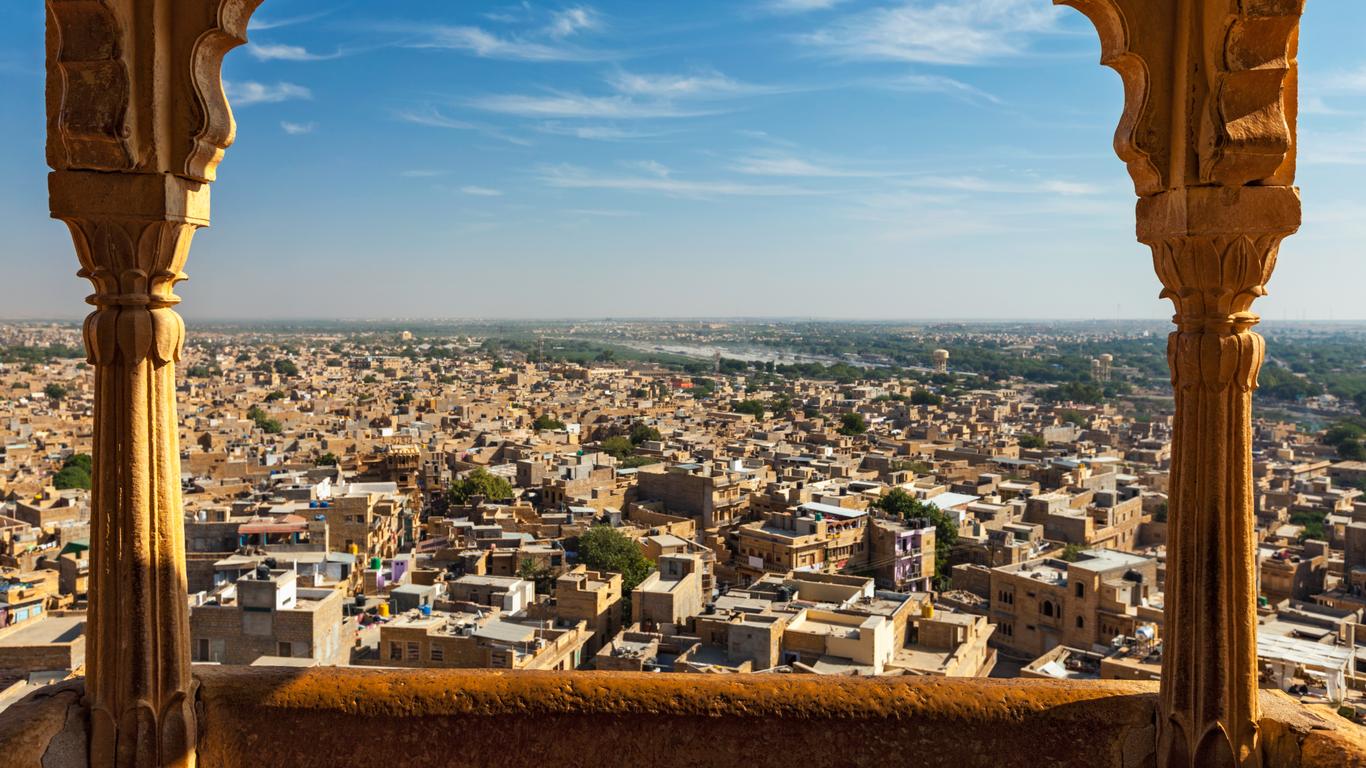1. Living And Breathing
Think this is just another pretty historic site? Think again. The walls of Jaisalmer Fort are alive - with the sound of people! There are 3000 inhabitants still living in the world's largest fortified city. Rajput ruler Jaisal in 1156 knew what he was doing when he built this city: it has sustained some form of civilization since then, moving from Bhati rule to the Mughal Empire and then the Rathores. When you first enter through the gates near Gopa Chowk, you'll be overwhelmed by their sheer size, the number of winding lanes and the impressive square of Dashera Chowk, right at the heart of the fort. Houses, temples, craft shops and eateries exist side by side - it's a thriving petri-dish of a culture that you cannot afford to miss.
2. Gardens Fit For The Royals
Bada Bagh is the central location for viewing the "chhatris" or royal cenotaphs. At the "Bagh", which means "gardens", history and culture mix in with the earthy red sands of the Rajasthani desert. Any culture or art buff will enjoy walking amidst its domed steeples and multiple columns. There is a very quiet, still and reverent air at the Bagh. Besides the incredible stone architecture that has been intricately carved and has clearly survived the ages, one has to wonder at the sheer number of royals commemorated here, since each time a royal member died, a "chhatri" was erected in memoriam.
3. Caravan Culture
Even today the desert folk of Rajasthan wander its beige and golden sands. Amidst all the red, terracotta earth is the assortment of colorful textiles, ornaments, instruments, jewelry and leather goods that forms part of the culture and history of these nomadic folk. In essence, they are part of Jaisalmer's rich history and their shimmering clothing, crafts and customs are still well-preserved today. To reach out and touch them, visit the Folklore Museum.
4. Puppet Master
No trip to Jaisalmer is complete without understanding its history, culture and, yes, taking in an evening show of Rajasthani drama with...puppets! Rare coins, manuscripts, recovered royal artifacts, weapons, musical instruments used in court and even fossils celebrate the desert culture. But nothing brings the day to a close quite like the incredible and hilarious puppet show that seeks to dramatize life in the desert with panache and play.
5. The Mansions Of Brocade Merchants
At once elegant and yet also slightly eerie, this cluster of 5 havelis (otherwise known as mansions), were built in 1805 by Guman Chand Patwa for his 5 sons. The entire project took the first 60 years of the 19th century. Crafted of yellow sandstone, the havelis are impressive, with their detailed carvings of deities and decorative elements; massive, imposing gates; tall, square-like skylights; huge, cavernous courtyards and multiple balconies. Spend the afternoon roaming its medieval and regal stone streets and halls.


